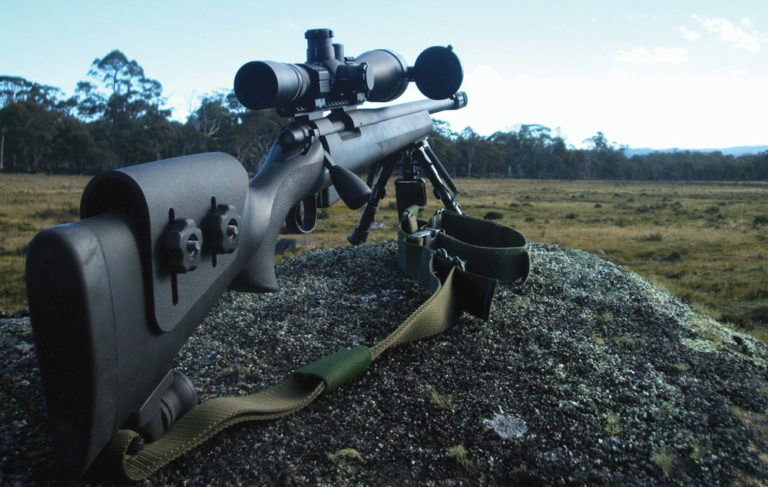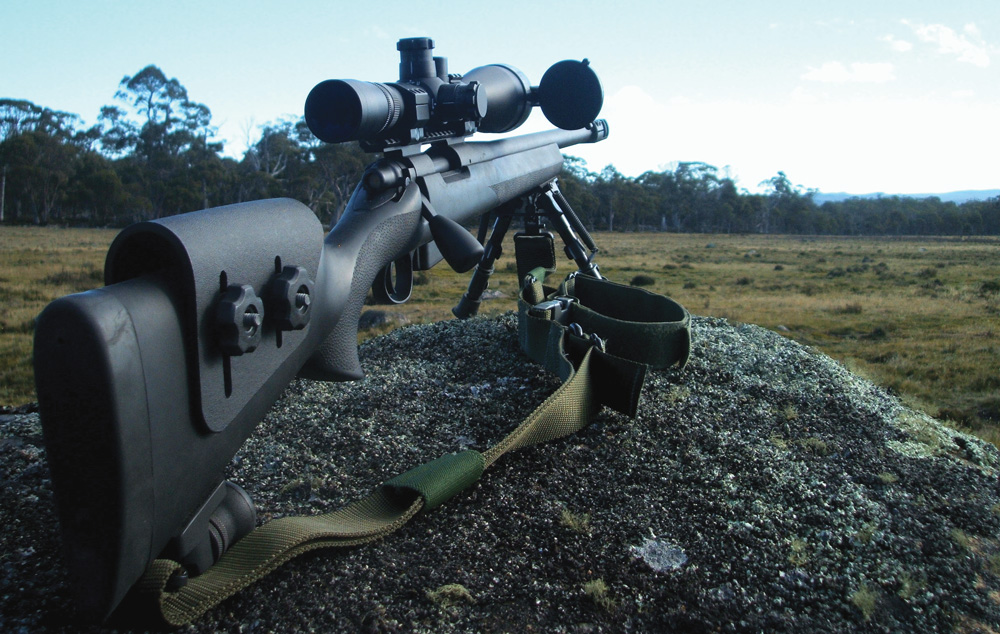

Putting aside technology in the form of laser rangefinders and rangefinding reticles, there are several methods available to the shooter for range estimation.
Techniques such as the known-distance comparison, bracketing, map method, and short-distance method allow the shooter to make a structured estimate of the range, which is far superior to a flat-out guess.
Each of these methods results in estimations, which therefore are subject to inaccuracy and variance, but the strength of these methods is that they can all be used at the same time. This enables the shooter to develop a “composite range” that’s averaged from the results of all the methods. With practice, this does provide a reasonably accurate representation of real range.
1) The Known-Distance Method
The known-distance method takes a distance that is visually very well known to the shooter, such as a football field or the distance between power poles, etc., and then asks how many times that known distance fits into the space the shooter is trying to measure.
The known distance can even be the viewed distance to the target at the 100 yard/meter shooting mound. The shooter may decide that there are two football fields or eight power poles that can fit between their location and the target, thus yielding an estimation of the range.
2) The Bracketing Method
The bracketing method works on the same principle as the known-distance method, but applies it differently. Essentially, the shooter makes a best guess both on what the range could not be less than and could not be more than, then takes the middle point between these two. The result is generally fairly accurate.
3) The Map Method
The map method works with the shooter finding their position and that of their target on a map and simply measuring the range in between.
This method is reliant on the shooter’s ability to navigate and to locate features on the map and apply them to the ground to accurately place the target’s position on the map. If the shooter is proficient in these forms of navigation, the range can be accurately measured.
4) The Short Distance Method
The shooter can employ the short distance method. This method works by estimating the range to a secondary target on the path to the actual target, one the shooter feels they can accurately estimate the range of, and then multiplying this distance out to the actual target to achieve the estimate of range to the target.
This method works particularly well, when the shooter can accurately measure a short distance, but not far enough so as to range the actual target.
5) The GPS Method
Finally, a GPS can also allow the shooter to estimate the range to the target. This does require the shooter to pinpoint the position of the target on a map and measure the intervening range.
The key to using any of these methods properly is practice. The shooter should estimate range on all manner of targets in all manner of environments.
Further, the shooter can practice by learning what common objects look like at long range or, even better, borrow a laser rangefinder and practice by estimating the range using these methods, and then measuring the range to see how close your estimate came to the actual.

Next Step: Get your FREE Printable Target Pack
Enhance your shooting precision with our 62 MOA Targets, perfect for rifles and handguns. Crafted in collaboration with Storm Tactical for accuracy and versatility.
Subscribe to the Gun Digest email newsletter and get your downloadable target pack sent straight to your inbox. Stay updated with the latest firearms info in the industry.

![Best Concealed Carry Guns In 2025 [Field Tested] Wilson Combat EDC X9S 1](https://gundigest.com/wp-content/uploads/Wilson-Combat-EDC-X9S-1-324x160.jpg)


![Best 9mm Carbine: Affordable PCCs [Tested] Ruger Carbine Shooting](https://gundigest.com/wp-content/uploads/Ruger-Carbine-Shooting-100x70.jpg)
![Best AR-15: Top Options Available Today [Field Tested] Harrington and Richardson PSA XM177E2 feature](https://gundigest.com/wp-content/uploads/Harrington-and-Richardson-PSA-XM177E2-feature-100x70.jpg)

An ordinary scope reticle can also be used to estimate distance. The duplex reticle on my fixed 4X scope covers or fits about one foot or a sheet of letter size paper at a hundred yards between the intersection of the fine cross hairs and the end of the coarse cross hair.
To use it in the field, imagine a piece of paper on your deer or hog. See how many times it fits the reticle and that’s the range in hundreds of yards. Pre-range your hunting zone by scoping fence posts. Most posts are four feet tall. Fit selected posts in the reticle to estimate range in advance. When that tropy buck steps out, you already know the range.
The scope on your rifle may be different or may change if it is a variable power scope. Sight through your reticle at a known size object (piece of letter size paper) at a known distance (100 yards) and see how it fits on your reticle. Some people use the thickness of the hairs or the post.
In tank gunnery, we had stadia lines (parabolic curves) on the sight reticle. All we had to do was fit the target tank into the stadia lines and we had the correct holdover. I wish there was a hunting scope like that.
One of the best ways is to use a scope with a Mil-Dot reticle, which when properly used will allow one to use common items to determine the range to the target. It works for military snipers, and it works for me. ‘Nuff said. ;-P